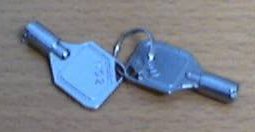Of course, I am limiting this discussion to PCs and other Internet nodes on the face of the Earth. Building a spaceborne network has its own special considrations, as well as a network of nodes deep inside the Earth.
An inexpensive replacement to the current networks of cables, cellular operations and telephone cables is mesh networks. In those networks, a PC communicates with its nearest neighbors, and they route packets to each other in a way reminiscient of the old UUCP protocol.
There is the problem of discovery of the topology of a mesh network, especially given its dynamic nature.
My suggestion: equip each node (a PC or other) with a compass or its equivalent (such as a GPS receiver) and a way to find the directions of its neighbors relative to it.
Nodes will select their IPv6 addresses from a block of addresses, and the addresses will depend upon their latitude and longitude. Thus, from the IPv6 address of a target node, the source node will figure out how to route data packets it wants to send to the target node.
Voila, no large corporations, no expensive infrastructures will be necessary (besides the GPS satellite network, if a GPS receiver is used).
Like this:
Like Loading...

